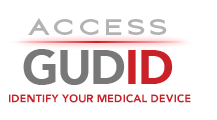SEARCH RESULTS FOR: (*bitcoin mining software tools馃挷itenthusiasts.com馃挷Crypto*)(3552 results)
Buffer Solution, pH 1.0 +/- 0.05 @ 25C, 250ml
DIVERSATEK HEALTHCARE, INC.
D82-3181
In Commercial Distribution
- 00816734021903 ()
- B019D8231810 ()
D82-3181
- Manometric gastrointestinal motility analysis system
Buffer Solution, pH 7.0 +/- 0.05 @ 25C, 500ml
DIVERSATEK HEALTHCARE, INC.
D82-3152
In Commercial Distribution
- 00816734021897 ()
- B019D8231520 ()
D82-3152
- Manometric gastrointestinal motility analysis system
Buffer Solution, pH 4.0 +/- 0.05 @ 25C, 500ml
DIVERSATEK HEALTHCARE, INC.
D82-3151
In Commercial Distribution
- 00816734021880 ()
- B019D8231510 ()
D82-3151
- Manometric gastrointestinal motility analysis system
Buffer Solution, pH 1.0 +/- 0.05 @ 25C, 500ml
DIVERSATEK HEALTHCARE, INC.
D82-3103
In Commercial Distribution
- 00816734021873 ()
- B019D8231030 ()
D82-3103
- Manometric gastrointestinal motility analysis system
Motility Cart for inSIGHT Ultima® and PriZm Motility Systems
DIVERSATEK HEALTHCARE, INC.
CART5R
In Commercial Distribution
- 00816734021866 ()
- B019CART5R0 ()
CART5R
- Manometric gastrointestinal motility analysis system
Anorectal Balloon
DIVERSATEK HEALTHCARE, INC.
A86-5070
In Commercial Distribution
- 10816734021856 ()
- 00816734021859 ()
- B019A8650700 ()
A86-5070
- Manometric gastrointestinal motility analysis system
Anorectal Balloon, 400CC TPE
DIVERSATEK HEALTHCARE, INC.
A86-4300-10
In Commercial Distribution
- 10816734021832 ()
- 00816734021835 ()
- B019A864300100 ()
A86-4300-10
- Manometric gastrointestinal motility analysis system
Anorectal Balloon
DIVERSATEK HEALTHCARE, INC.
A86-1070
In Commercial Distribution
- 10816734021689 ()
- 00816734021682 ()
- B019A8610700 ()
A86-1070
- Manometric gastrointestinal motility analysis system
Sphincter Locator
DIVERSATEK HEALTHCARE, INC.
A04-2000-S
In Commercial Distribution
- 00816734021675 ()
- B019A042000S0 ()
A04-2000-S
- Manometric gastrointestinal motility analysis system
Sphincter Locator
DIVERSATEK HEALTHCARE, INC.
A04R-2500
In Commercial Distribution
- 00816734021668 ()
- B019A04R25000 ()
A04R-2500
- Manometric gastrointestinal motility analysis system

